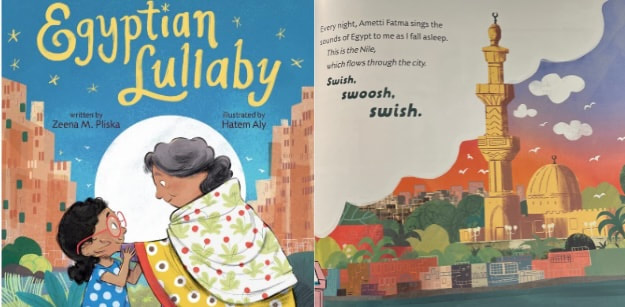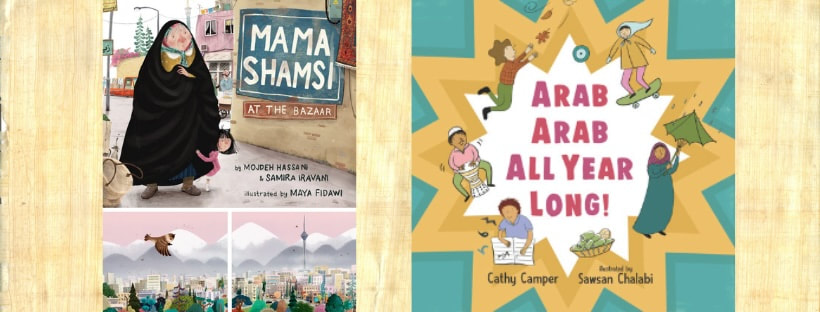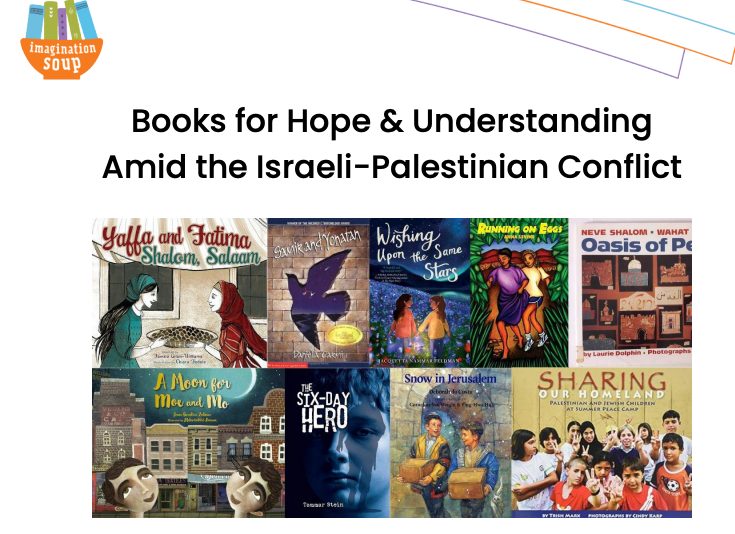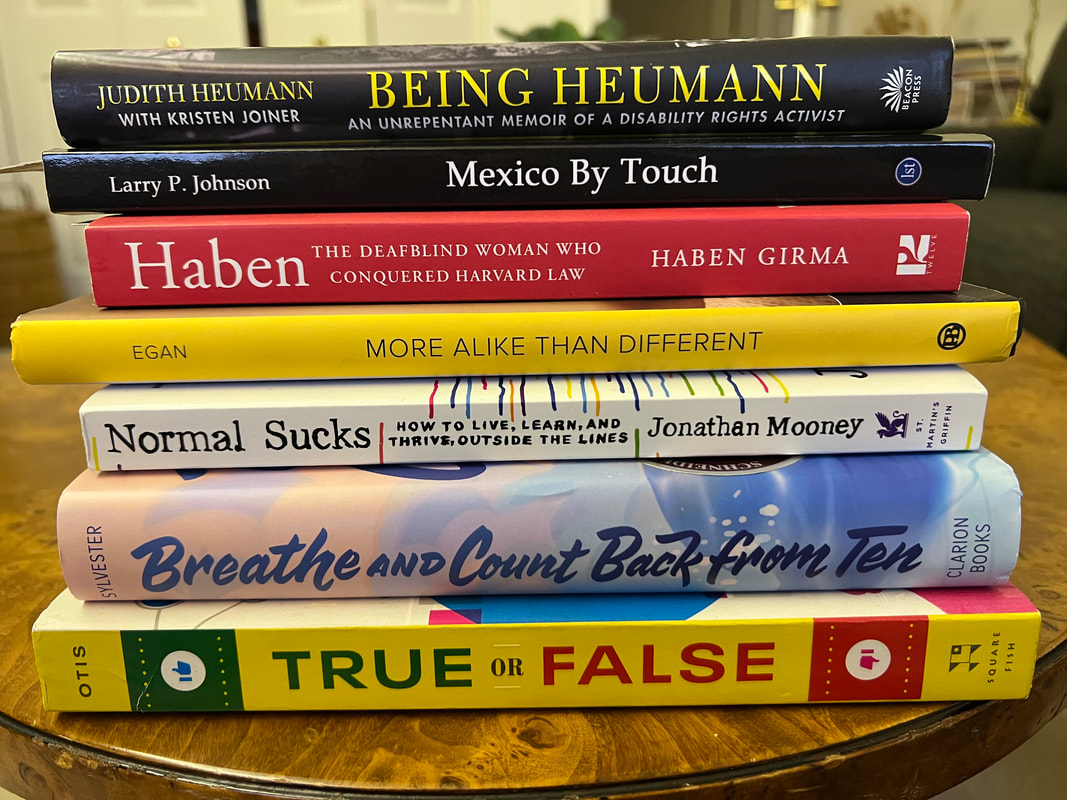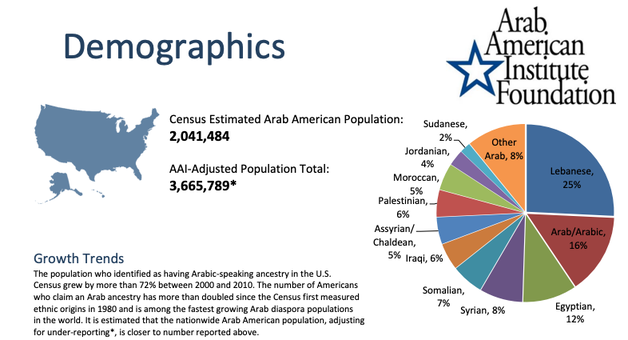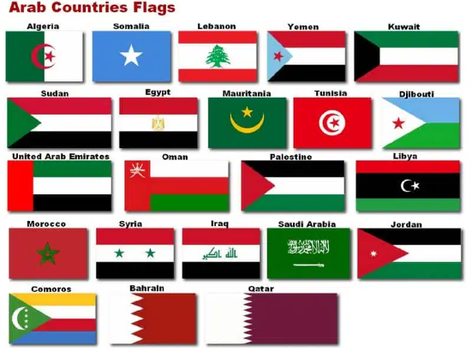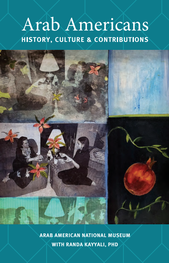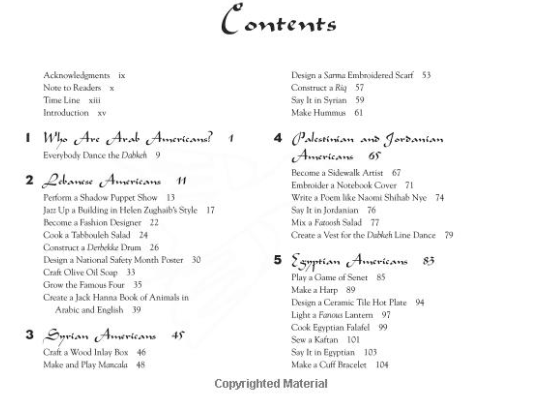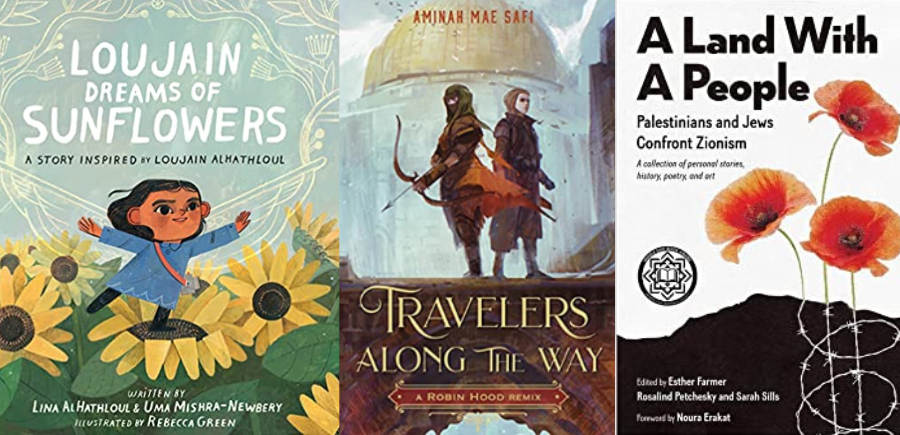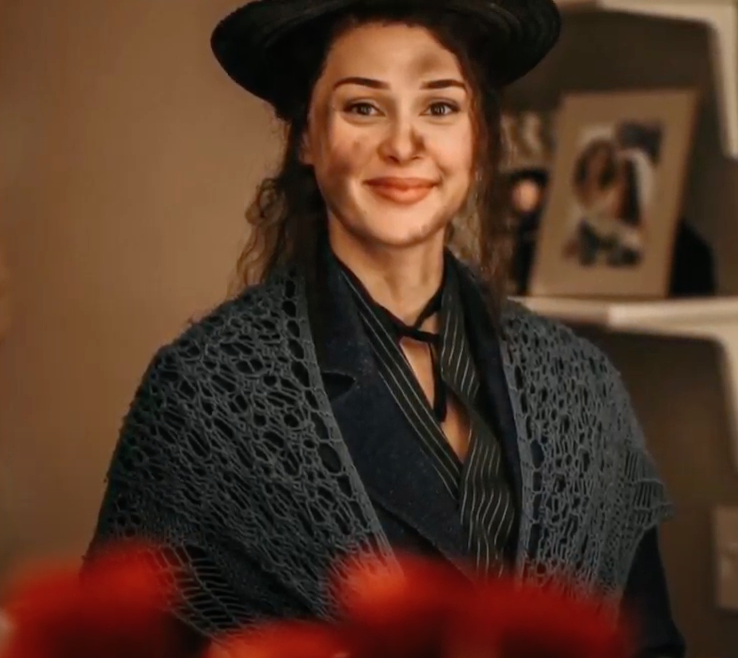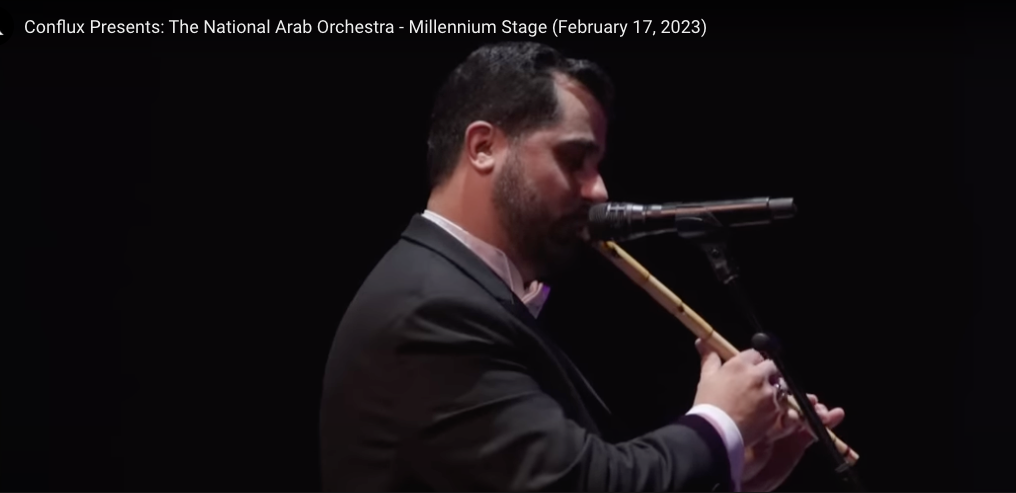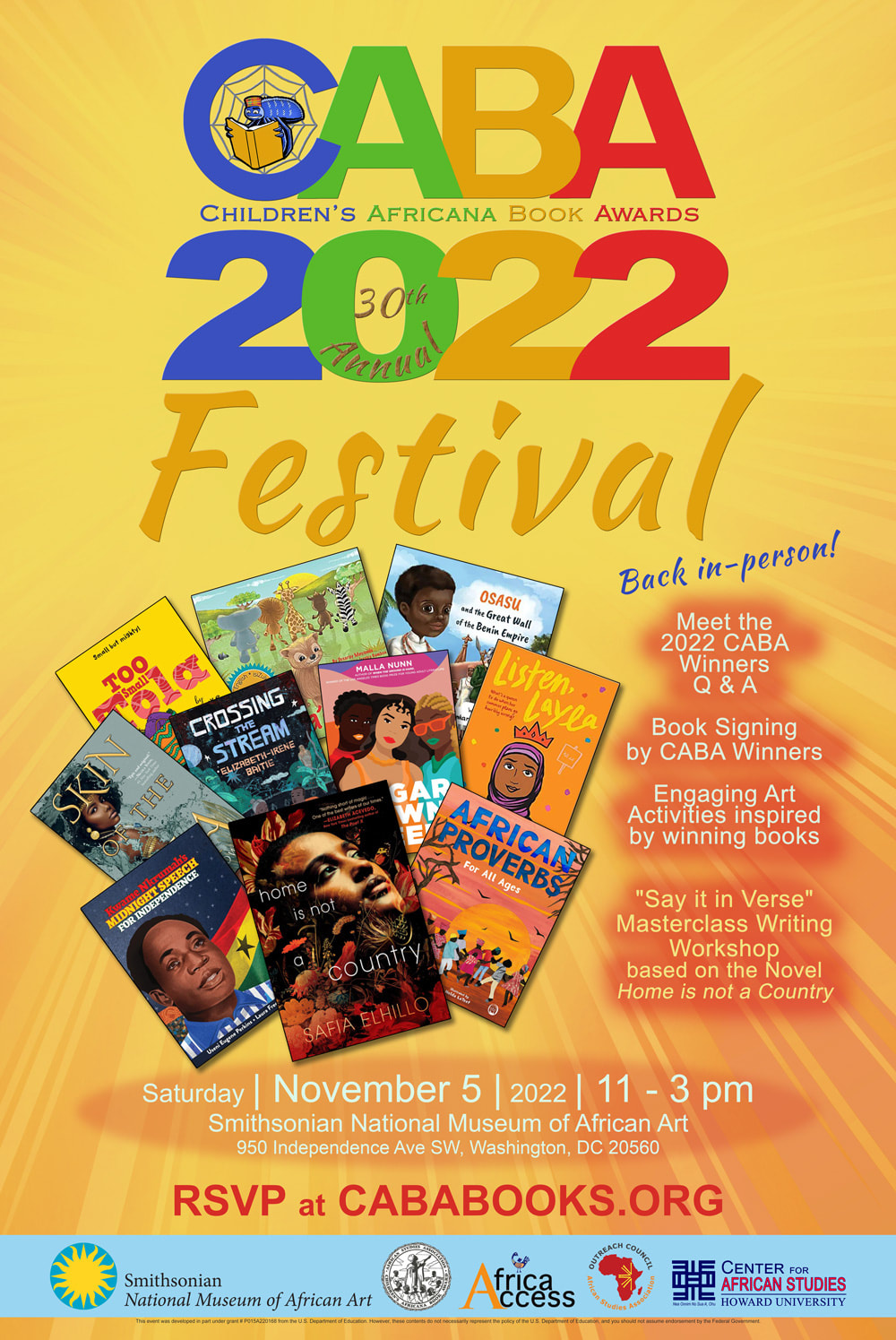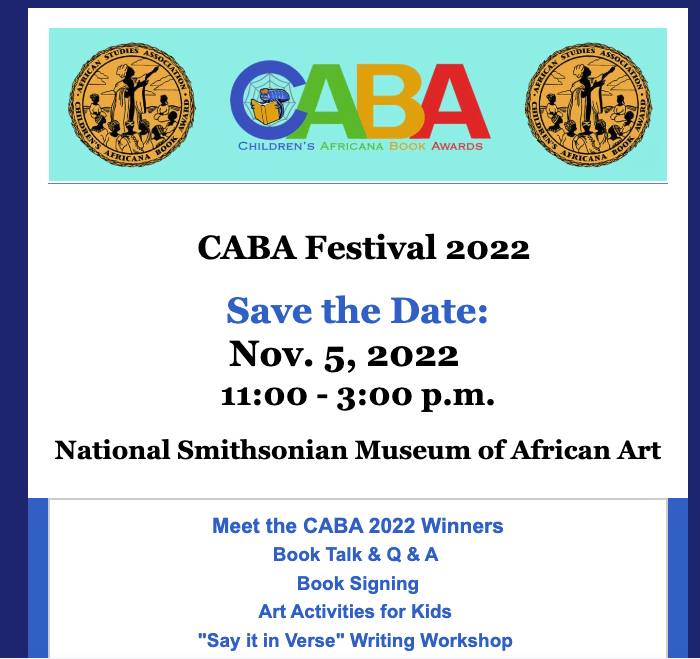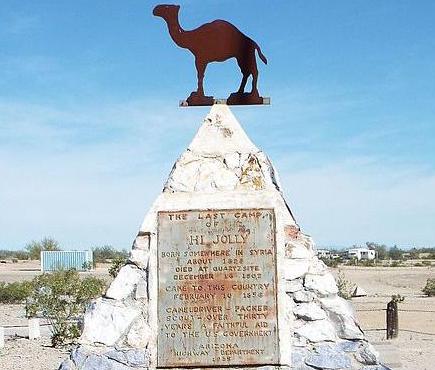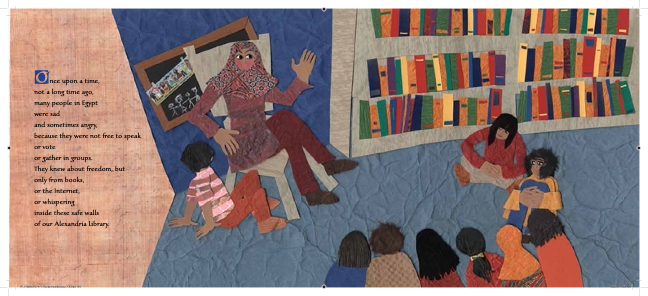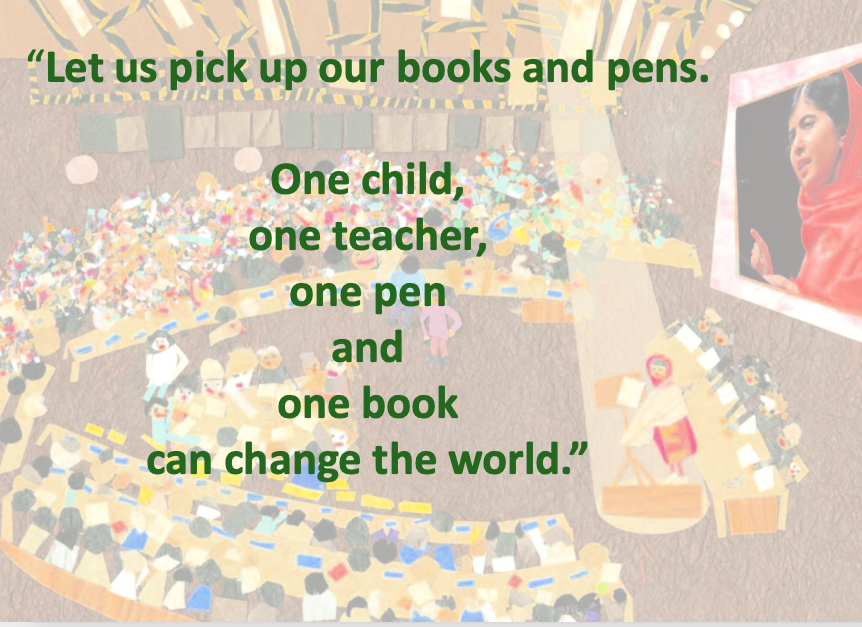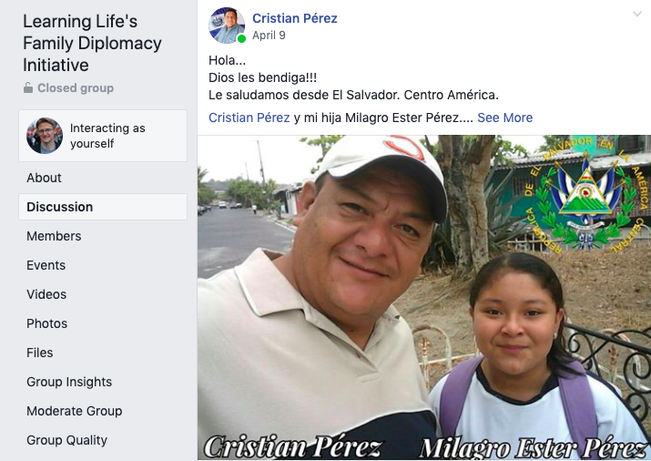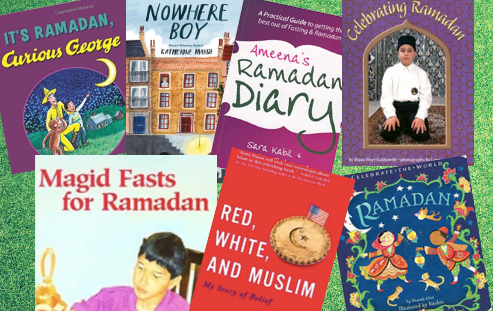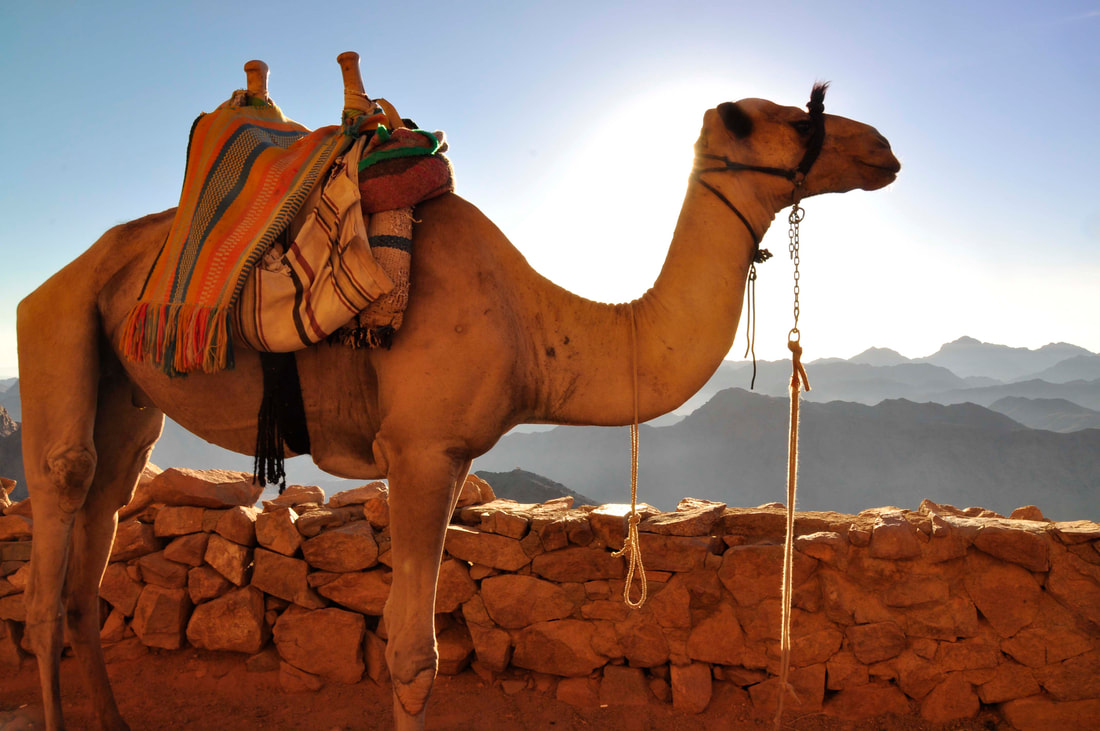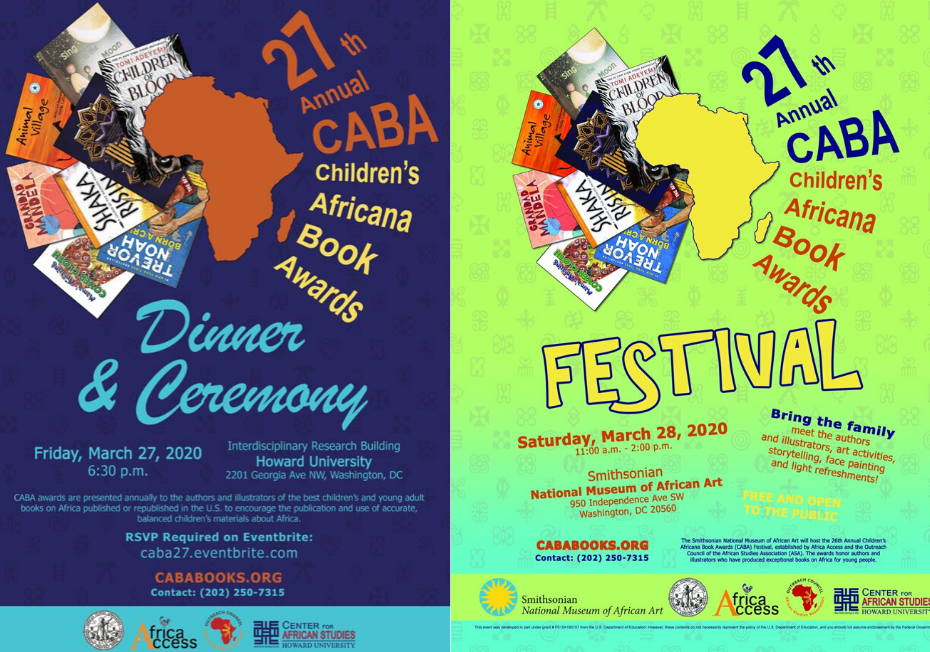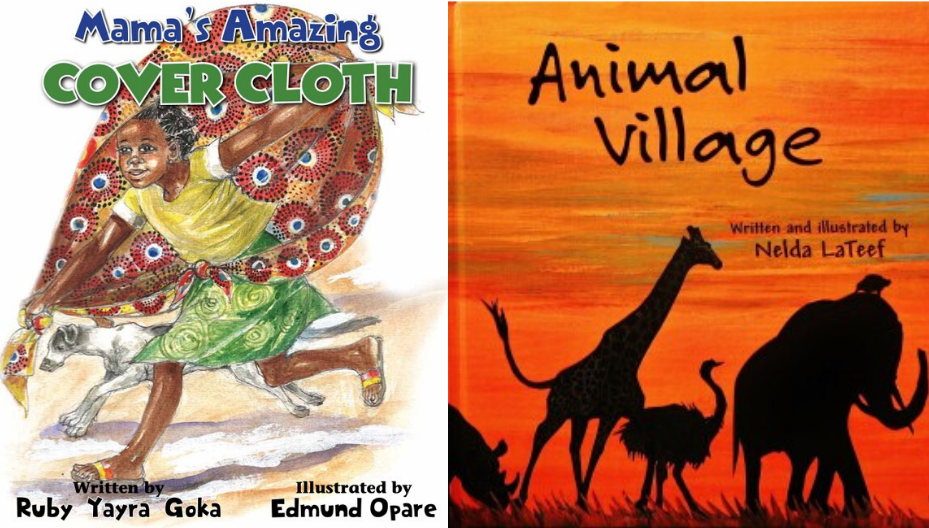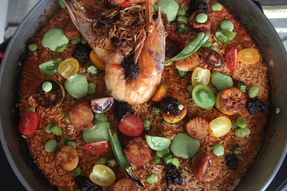 “We’ll go to the market first thing in the morning and let the ingredients speak to us,” Nanabarima continued… “Every ingredient has a story, but you have to know how to listen.” The ingredients of jollof rice speak to young Kofi in Sankofa: A Culinary Story of Resilience and Belonging, a Children’s Africana Book Award (CABA) Honor Picture Book for 2024. Author Eric Adjepong is a first generation Ghanaian American who was also a finalist on Bravo’s Top Chef. Lala Watkins is the illustrator. Adjepong even includes his recipe for jollof rice so you can have a classroom or family potluck, just like Kofi. CABA’s Best Picture Book for 2024 is Egyptian Lullaby, by Zeena Pliska, a kindergarten teacher who recalls the sounds outside her father’s apartment in Cairo: Auntie Fatma creates a lullaby out of those special Cairo sounds. 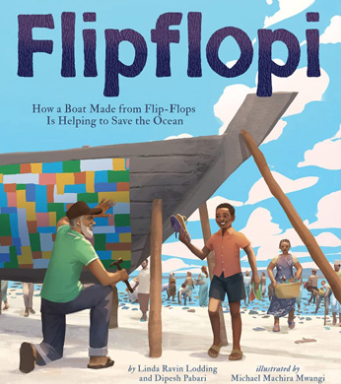 Additional CABA Honor Picture Books include
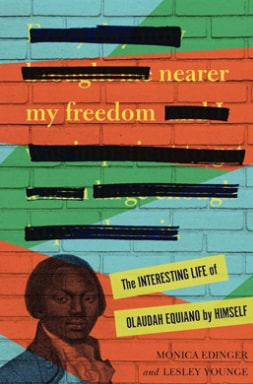 CABA also named two best chapter books and one honor book:
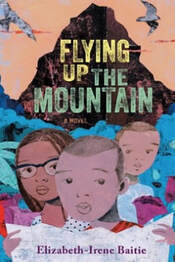
In honor of Arab American Heritage Month in April, also explore the Arab American Book Awards from the Arab American National Museum and the Middle East Outreach Council Book Awards (MEOC). 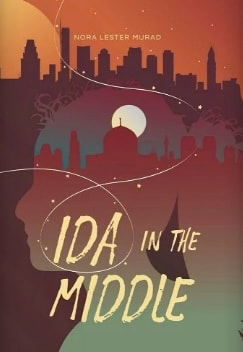
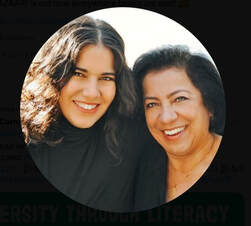
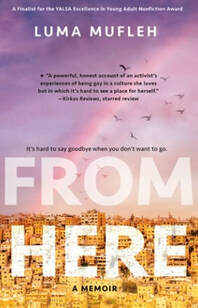
Let any of these titles be a forever-charged magic carpet,
whisking you to new tastes and cultures, new friends and adventures. No batteries required! 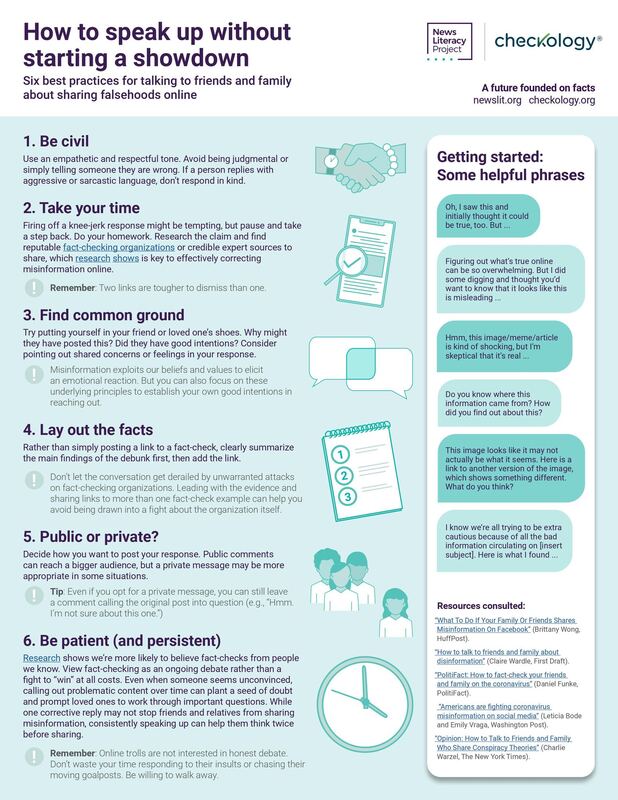 It can be both challenging and rewarding to bring current events into the classroom or around the dinner table. That is perhaps especially true now, when tragic scenes from Gaza and Israel are on television everyday and a class may include children on both sides whose direct family members are affected. There are books and resources to help and guide us all. This may be a perfect time to talk about news literacy – how to tell if what you see and read is accurate and true. The News Literacy Project is filled with downloadable resources, free webinars and checklists to identify misinformation, vet a news source, or learn to speak up without starting a showdown. US-based advocacy groups are reporting startling increases in hate crimes and hate speech, against Jews, Arabs and Muslims. Interestingly, “semitic” actually refers to people who speak a family of languages including both Hebrew and Arabic, but during the nineteenth century antisemitism became linked to specifically to anti-Jewish campaigns. The Southern Poverty Law Center’s Learning for Justice project offers articles and publications about anti-bias education. Unity Productions Foundation has created multiple films about Islamic history and culture, lesson plans, as well as a short film American Muslims: Fact and Fiction. Islamic Networks Group (ING) has teaching resources for shared values among faiths, anti-bullying and racism. ING also offers educational presentations for schools and communities. ADL offers resources to address and challenge antisemitism. Teaching for Change offers anti-bias resources for young children, helping youngsters respect differences and act against bias and unfairness. Melissa Taylor writes a book blog called Imagination Soup, in which she offers “Books for Hope amid the Israeli-Palestinian conflict” to help young readers envision pathways toward peace. Some of these books feature friendships between a Muslim and a Jewish child. 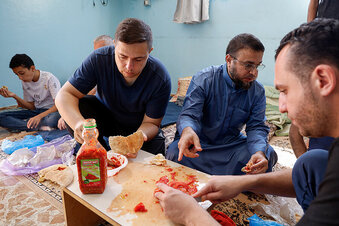 People eat at the home of Ibrahim Alagha, who sheltered 90 people in his home in the southern Gaza Strip. Christian Science Monitor People eat at the home of Ibrahim Alagha, who sheltered 90 people in his home in the southern Gaza Strip. Christian Science Monitor That is also the theme of young adult organizations like New Story Leadership and Standing Together, both offering opportunities for young Jewish and Palestinian leaders to learn and work together, as well as resources and possible speakers. I would also encourage you to look for articles and publications that are now often called “solutions journalism,” offering actual solutions or at least resilience and collaborative responses to problems and crises. A perfect example is the Christian Science Monitor’s November 6 issue, featuring one article on Palestinians turning to each other with food and shelter scarce in Gaza and the next page on an army of “can do” volunteers filling needs in Israel. Finally, I am eager to let you know about a virtual class I am teaching in February – March 2024 through Politics and Prose, one of our great independent bookstores in Washington, D.C. “Life from a Different Perspective” will explore seven books by authors with disabilities. The authors will be online with us as we discuss their challenges, their books and the ways we can all work toward a truly inclusive society. Details and registration here. Please add other resources or links in the comments.
More than three million Americans identify as Arab American, according to the Arab American Institute – the largest percentage from Lebanon and Syria but more currently coming from Iraq, Egypt and Somalia. The term “Arab American” refers to anyone living in the United States with ancestry in any of 22 Arab countries, from North Africa to western Asia. Although Middle East and Arab are often but incorrectly used interchangeably, the Middle East includes countries where Arabic is not spoken such as Iran, Israel and Turkey. Arab and Muslim are also not synonymous. Arabs are a minority of Muslim Americans and there are large Christian communities in Lebanon, Syria, Iraq, Palestine and Jordan. Historically, there were also Jewish communities in Palestine, Syria, Iraq, Yemen, Tunisia and Egypt. 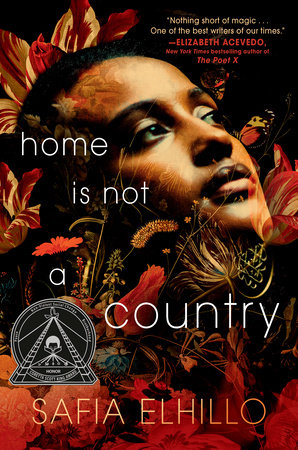 April is the month designated to celebrate the accomplishments of Arab Americans and I’m eager to share with you many resources to do that – especially children’s books. The Arab American National Museum’s annual book awards this year honored Sudanese American Safia Elhillo’s Home Is Not a Country - Nima wishes she were someone else. She doesn’t feel understood by her mother, who grew up in a different land. She doesn’t feel accepted in her suburban town; yet somehow, she isn’t different enough to belong elsewhere. Her best friend, Haitham, is the only person with whom she can truly be herself. Until she can’t, and suddenly her only refuge is gone. (Penguin Random House) 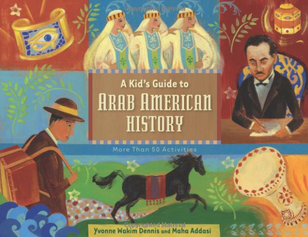 The 2014 Arab American Book Award went to A Kid’s Guide to Arab American History: More than 50 Activities by Yvonne Wakim Dennis and Maha Addasi. Activities are grouped by ethnic background – Lebanese, Syrian, Palestinian/Jordanian, Egyptian, Iraqi, Yemeni, Arab Americans from Africa and the Arabian Gulf. 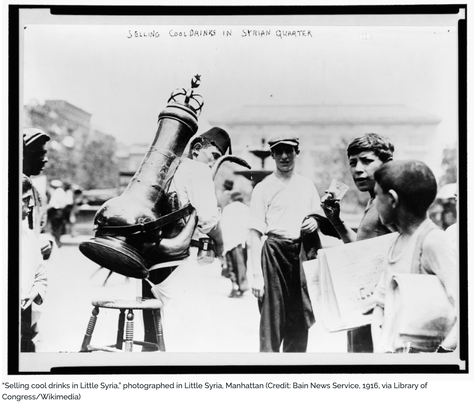 The Arab American National Museum offers a wealth of teaching materials – English-Arabic Storytime, traveling exhibitions, lesson plans, virtual tours, even culture boxes filled with musical instruments and interactive educational treasures. Contact Dave Serio, Educator and Public Programming Specialist. The Middle East Policy Council provides resource guides, country profiles, films, videos and timelines on its TeachMideast website. The Middle East Outreach Council honors picture books, youth literature and youth nonfiction with its annual book awards. The Children’s Africana Book Awards often include winners from Arab countries in North Africa, including Egypt, Algeria, Libya, Tunisia and Morocco. My own Hands Around the Library: Protecting Egypt's Treasured Books has been honored with several of these awards. Here’s a program produced by the Baltimore Luxor Egypt Sister City Committee that highlights modern day American Egyptian Women of Influence – ballerinas, businesswomen, scientists, entrepreneurs, chefs, authors – even Egyptian American Shereen Ahmed from Maryland who played Eliza in the Broadway touring production of My Fair Lady - 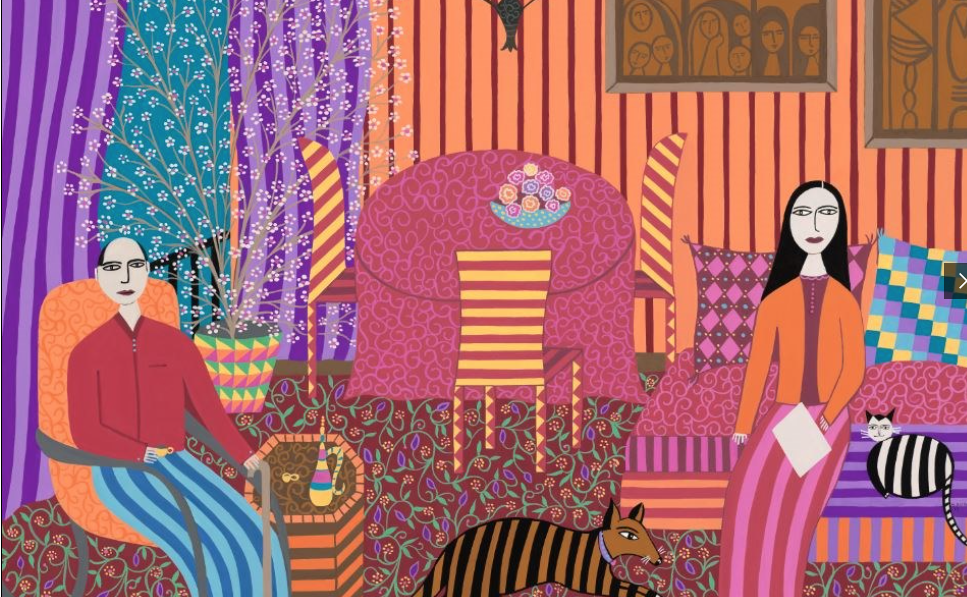 The Arab America Foundation, which sponsors annual programs to honor 20 Arab Americans under 20, 30 under 30 and 40 under 40, also organized a "Taking Back Our Narrative" weekend in 2023 at the Kennedy Center in Washington, D.C. Syrian American artist Helen Zughaib was featured with her dramatic and distinctive paintings of the Syrian migration, as well as her book, Stories My Father Told Me, which she discusses here - on a page that also offers visitors a chance to share their stories. Finally, to wake everyone up and stir your soul – here is the National Arab Orchestra in performance recently as part of the Taking Back Our Narrative celebration. Watch here – in just a minute orchestra founder Michael Ibrahim will be using that flute to conduct the orchestra! Mabrouk (Congratulations!) ‘If Grandmommy is upset, soon everybody will be upset. Grandmommy passes on her moods faster than mosquitoes pass on malaria.” We all know how one person’s mood can change the atmosphere for the whole family – and that is true all around the world, including Lagos, Nigeria, the setting for Too Small Tola, by Atinuke, a 2022 Children’s Africana Book Award winner. These winning stories can introduce young readers to a whole continent of culture, history, flavor and fun. Keep reading to find out more about this year’s winners, the November 4-5 celebration at the National Museum of African History in Washington, D.C. and more resources to bring Africa into the curriculum. 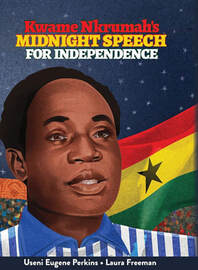 The Children’s Africana Book Awards (CABA) are presented annually to the authors and illustrators of the best children’s and adult books on Africa published or republished in the U.S. Africa Access and the Outreach Council of the African Studies Association (ASA) created CABA in 1991 to encourage the publication of and use of accurate, balanced children’s materials about Africa. #CABAbooks. The Center for African Studies at Howard University manages the awards, founded by librarian Brenda Randolph. Each of these websites has additional resources, including videos, teaching materials and special events. Here are the 2022 CABA winners and honor books – BEST BOOKS YOUNG CHILDREN Kwame Nkrumah’s Midnight Speech for Independence by Useni Eugene Perkins, illus by Laura Freeman Just Us Books “Our independence is meaningless unless it is linked up with the total liberation of Africa,” said Kwame Nkrumah as he marked Ghana’s declaration of independence in 1957. Ghana became the first sub-Saharan African nation to break free from colonial rule. Vibrant, dramatic illustrations complement this brief biography of Nkrumah, culminating in his speech for independence. Very useful backmatter, including a page of Adinkra symbols and their meanings. 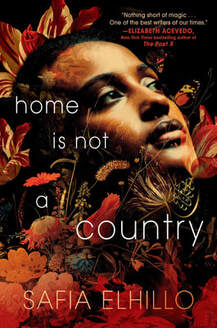 OLDER READERS Home is Not a Country by Safia Elhillo Make Me a World Home is Not a Country, by young Sudanese American writer and poet Safia Elhillo, “is a tree of identities, of who we are and who we could be and the dangerous and beautiful place in between,” writes Christopher Myers, the acclaimed author and artist who now leads Make Me a World, an imprint of Random House Children’s Books. Nima doesn’t feel understood: how universal is that sentiment among young people? This novel in verse introduces us to Nima, her mother from Sudan, her close friend Haitham - “his polo shirt hangs loose about him years before the shoulders To come & all they’ll have to carry.” There is travel to and from Sudan including a sister from the world of magical realism who carries the name Nima was supposed to be given – if everything hadn’t gone wrong. “& i feel my own smallness As I try to fill her (Mama’s) life’s empty spaces” Reviewer Lidwien Kapteijns (Wellesley College) calls this beautiful book a “literary gem and a profound, moving and delightful story by an immensely promising author.” HONOR BOOKS/HONORABLE MENTION Young Readers 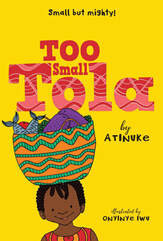 Too Small Tola by Atinuke, illus by Onyinye Iwu Candlewick “Too Small Tola does a wonderful job depicting the lives of this working-class Nigerian family while portraying the drama of daily life through the perspective of a young girl,” writes reviewer Lauren Parnell Marino (University of Wisconsin – Madison). Nigerian-born author Atinuke also wrote the CABA Award-winning Anna Hibiscus series. She is a traditional oral storyteller and has been nominated for the Astrid Lindgren Memorial Award in 2023. 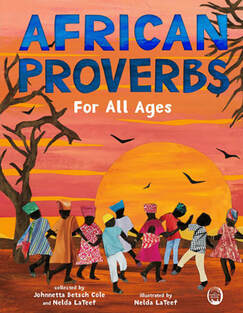 African Proverbs for All Ages Collected by Johnetta Betsch Cole and Nelda LaTeef, illus by Nelda LaTeef Roaring Brook Press “It has been said that a proverb is a short sentence based on long experience,” writes Johnetta Betsch Cole, former president of both Spelman and Bennett Colleges and director of the National Museum of African Art. “With proverbs, every conversation is sure to be rich and memorable.” On each page, children choose which of 4 proverbs has been illustrated – and they are invited to illustrate the others and share proverbs from their own background. 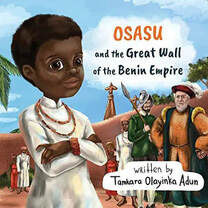 Osasu and the Great Wall of the Benin Empire by Tamkara Olayinka Adun The Benin Empire flourished from the 900s until its fall to the force of the British Empire in 1897. “Adun’s retelling…is clear, cogent and creative,” writes reviewer Tolu Akinwole (University of Wisconsin-Madison). It is a “must-read for every child and teen interested in untold histories.” The colorfully illustrated story is told from the point of view of Osasu, a young Edo boy who enjoys the protection of the Great Wall built by his ancestors. 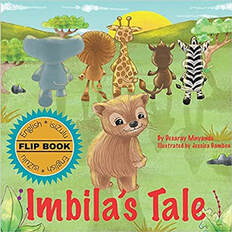 Imbila’s Tale by Desaray Mnyandu ills by Jessica Gamboa English-Zulu flip book Zulunomics, LLC All the animals of the savannah are excited to finally get their tails. This African folk tale is told in English and Zulu. The wily little imbila – also known as a hyrax - tries to get his tail without leaving the comfort of his warm rock , only to learn a hard lesson and end up with only a stub of a tail. Older Readers 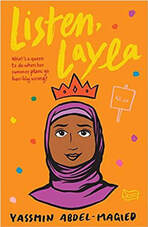 Listen, Layla by Yassmin Abdel-Magied Random House Australia Modern futures and family culture collide in this story of Layla, a teen born in Sudan growing up in Brisbane, Australia. “Sudan will always be home for Mama and me, Habiba,” says Layla’s father. “You kids shave to decide on home for yourself.” Layla is on the verge of losing a travel opportunity for young inventors when her grandmother falls ill and the family immediately returns to Sudan to be with her. Reviewer Lidwien Kapteijns (Wellesley College) notes that the “descriptions of Sudanese cultural norms…will make this a delight both for readers already families with the Sudan and those new to it.” 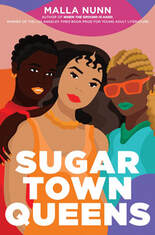 Sugar Town Queens by Malla Nunn Penguin A bi-racial girl living in post-apartheid South Africa is determined to unveil the mystery of her white mother’s hidden past – a mother who “totters between reality and the life she lost years earlier…The story takes wings when Amandla discover in her mother’s pocket book a large wad of cash with a strange address located in the mostly white city,” write reviewers Barbara Brown (Boston University) and Rehana Odendaal (University of Pennslvania). “The novel does an excellent job of conveying the naturalized levels of segregation that continue to permeate space in ‘the new South Africa.’” Middle school girls everywhere will relate to Amandla’s efforts to feel comfortable with herself, in spite of living “in a tin shack because of my skin, my face, my hair…”. Amandla learns that “words have power. String enough words together and you get a story. Sugar Town Queens is a powerful, beautifully written story. 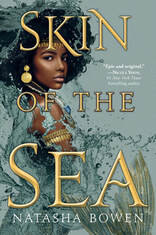 Skin of the Sea by Natasha Bowen Random House Books for Young Readers This first book of a fantasy series by debut author Natasha Bowen blends “West African history and Yoruban mythology to create a new fairy tale” (New York Times). A young Black mermaid collects souls of those who die at sea but, defying the gods, she saves the life of one living boy who is thrown overboard – and there is the dilemma that drives the story. Reviewer Patricia Kuntz calls the book “a wonderful read and a good introduction to the Yoruba religion, specific gods and their functions to maintain society.” 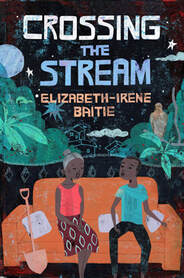 Crossing the Stream by Elizabeth-Irene Baitie Norton Young Readers Twelve-year-old Ato faces many of the same issues in Ghana as his contemporaries in America: disagreements with parents while trying to measure up to their expectations - “He hoped he would make (his mother) proud of him and she would stop feeling sad and scared;” learning how to speak up, cope and succeed. Ato’s grandmother reminds him that “we all have spirits inside. Noisy spirits that should – You’re not good enough…Quietly tell them: Go Away.” Ato’s friend Dzifa counters adult criticism by announcing, “I don’t have a Spirit of Disrespect. I have a Spirit of me.” Ato frequently compares himself to a falcon, sometimes “spinning helplessly down to earth from the sky.” Reviewer Barbara Lehman (Ohio State University) recommends the novel for its universal appeal while convincingly portraying local culture “through her characters’ speech patterns, descriptions of street and community life.” These 2022 Children’s Africana Book Award winners will be honored during a family celebration at the Smithsonian National Museum of African Art on November 5 - Additional Resources The Gold Road highlights the people, places, and items related to the medieval Sudanic empires of Ghana, Mali and Songhai. Gold, the region’s most valuable resource, moved along regional and trans-Saharan routes reaching as far north as France. The Gold Road invites users to explore hundreds of topics related to the empires and their role in global history.
IKG Cultural Resource Center is an educational organization that is devoted to the re-discovery and application of ancient African history, culture and wisdom. Africa Access Reviews provides descriptions and reviews of children’s and young adult books on Africa. Links to Read Africa and Research Starters. Please add your own resources to share in the comments. Who would have guessed that a Muslim Syrian immigrant – originally hired to bring camels to the Southwest United States – would end up surveying the original road for the famous Route 66 to California? You can learn the story of Hi Jolly – the American mispronunciation of Hadji Ali – in The Great Muslim American Road Trip (now available to stream on PBS). The three part, three-hour film is one of the outstanding new resources to learn and teach about Muslims as an integral part of American history, from its beginnings until today. It is one of many compelling films written and directed by Alex Kronemer, the award-winning founder and CEO of Unity Productions Foundation. From Chicago to Los Angeles, American Muslim pop singer Mona Haydar and her husband Sebastian Robins drive Route 66, stopping to talk with Muslims all along the way. I talked with Alex about the genesis of this fun and very educational film… 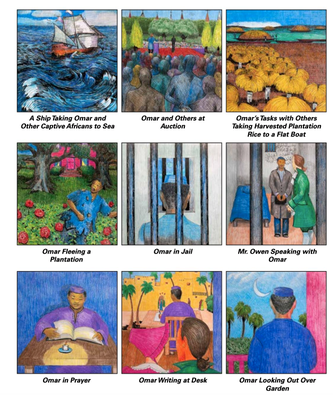 Ever heard of Omar Ibn Said? He was a Muslim scholar born in what is now Senegal in West Africa. He was captured, enslaved and brought to Charleston, South Carolina, where he wrote his autobiography in Arabic – and that autobiography is now in the Library of Congress. Thank you to Susan Douglass at the Georgetown University Center for Contemporary Arabic Studies for providing many resources. Listen to the story of Omar Ibn Said here with a children’s picture book version here, and a video from TRT (Turkish Broadcast Service) here. 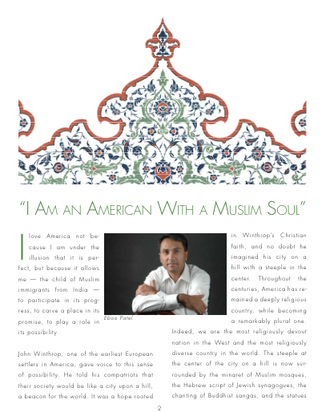 Then come up to our own century when the U.S. State Department published a book about Being Muslim in America, in which Eboo Patel writes, “I love America not because I am under the illusion that it perfect, but because it allows me, the child of Muslim immigrants from India to participate in its progress, to carve a place in its promise to play a role in its possibility. 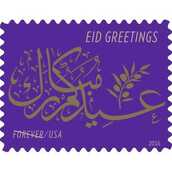 Browse the Bridging Cultures Muslim Journeys Bookshelf for books, films and other resources. Then there is the Middle East Outreach Council , a national network of educators dedicated to disseminating apolitical and nonpartisan information, resources and activities furthering understanding about the Middle East, including the Arab world, Israel, Iran, Turkey, and Afghanistan. MEOC’s target audience is non-specialists at the K-12 and college levels, and includes the annual Middle East Book Award. The Arab American National Museum in Dearborn, Michigan, has its own resources and annual book awards. (Hands Around the Library: Protecting Egypt’s Treasured Books won both the Middle East Outreach Council and Arab American National Museum awards in 2013.) Salaam Reads is a recent imprint from Simon and Schuster featuring children’s books that "celebrate joy, vibrancy, and variety in stories of Muslim life.” Muslims are woven into the fabric of American life and culture. Their stories can be shared anytime, but especially during Arab American Heritage Month in April or at times of key Muslim holidays, which rotate through the year according to the lunar calendar. Ramadan will begin about March 22, 2023, ending with the Eid al Fitr feast about April 21 and the Eid al Adha feast about June 28. If you have other useful sites, resources or experiences about Muslims in America, please share them in the comments – and thank you for joining me on this journey. “Having a library where you can go every day is the bright spot of middle school!” said the daughter of fellow author and member of the Children’s Book Guild of Washington, D.C., Laura Gehl. Libraries are bright spots all around the world, especially in challenging times when librarians and the spaces they manage are called on to do so much more than check out books. Librarians in the U.S. have been passing out masks and COVID testing kits and reorienting programming to Zoom. In Ukraine, the president of the Ukrainian Library Association echoed the cries of protesters in Egypt in 2011, “Libraries are places of safety and freedom…Libraries are power places where people find themselves.” 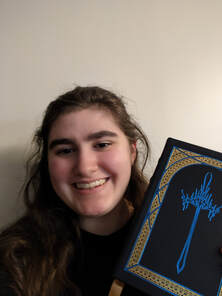 Corinne with favorite book "Way of Kings" by Brandon Sanderson Corinne with favorite book "Way of Kings" by Brandon Sanderson Libraries continue to be powerful places in America too. The Friends of Libraries Montgomery County (FOLMC - Maryland) has two student members who reflected on their earliest memories of libraries. Corinne Nicholls (Senior Student Representative) My earliest full memory I have of the library was the day I got my first library card. I remember feeling so grown up, and like I had just made the single most important achievement of my life (which the librarian at the Wheaton Library assured me it was). Since I no longer had to check out books with my Mom, I was allowed to check out as many as I wanted, so I originally grabbed 10ish books. After some convincing from the librarian, I cut down to about half of that, but I was still so excited that I had a bag full of library books and a cooler looking library card than my Mom’s. I can attribute my desire to become a librarian in my adult years to my wonderful childhood memories of the library. The library was always a magical experience for me, and after that day, I felt like I had been fully initiated as a member of the coolest place on the planet. 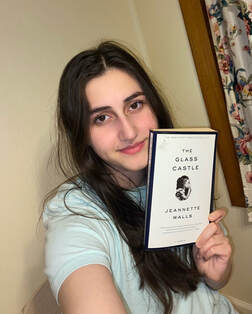 Boshra Nouraie, with favorite book, "The Glass Castle" by Jeannette Walls Boshra Nouraie, with favorite book, "The Glass Castle" by Jeannette Walls Boshra Nouraie (Junior Student Representative) My earliest visits to libraries formed some of my happiest and most significant memories. In elementary school, I was always most excited for Media Center days. I would feel my excitement building walking into my school's library, and I would sit at the edge of my seat waiting for the lesson to finish so I could go browse the aisles and pick up a new book. In my later elementary school years, I formed a special bond with a few of my classmates by reading the series The Mother-Daughter Book Club, by Heather Vogel Frederick. Some of my favorite conversations were those I had about books, and the library inspired me to join my school’s book club and start writing as an outlet that, even until this day, supports my mental and emotional well-being. My mom would take me to the public library during the summer early and let me explore a world outside of my home - world that would uplift me in my toughest times, and I can never thank the library enough for that.  And the value of libraries today – the reason they are worth our tax money? Boshra I believe libraries are a worthwhile expense because by funding libraries we are supporting mental health resources, safe havens, and fostering educational opportunities. A library is more than just a place to check out books, a library is a place of growth for the members of our community from the minute they walk in, to the minute they walk out. Within books, members of our community can build understanding and find themselves, and experience a sense of hope that will brighten all of our futures. Without the library, I would not know how to cope with obstacles in my life, and I would not know how to help others in the capacity that I now do. Literature and the shared setting of a library inspires connection, connection that we, as a community, need now more than ever. Libraries help us empathize, empower, and educate. Joy and unity in a community can flourish, with the prosperity of our public libraries. Corinne I still consider libraries to be the coolest places on the planet, but as I’ve gotten older and more involved in the library community, I’ve realized just how integral they are to our communities. As a high school student, and upcoming college freshman, I can not imagine what my schooling would look like without the library. Students and youth are offered so many resources at the library, including community events, free and accessible WiFi, a quiet spot to study, and physical/electronic learning material. Outside of the world of academia, the library is a community center that allows everyone to come together and enjoy the diverse range of experiences, talents, and knowledge present in our area. Of course, I have to mention the mountains of books, audiobooks, CDs, and more offered at libraries because no library would be complete without them! We live in a time dominated by the exchange of information, so having a physical building that provides the opportunity to learn, to read, and to have fun while doing all of those things is a big blessing. My favorite thing about libraries is that they are a safe space for so many. Anyone can walk into a library, be greeted by the smiling face or the friendly eyes of a librarian and know they are in an open and safe place and feel an incredible sense of belonging. The world and our communities are changing fast, but libraries are changing right along with it in the best ways. Especially seeing how they remained safe havens and just as resourceful through a global pandemic, I don’t see how our communities would be complete without them! They truly are wonderful and ready to offer magical experiences to anyone who takes advantage of them. Add your own favorite library stories in the comments below. Note: Rising Juniors in Montgomery County Public Schools are eligible to become student representatives of FOLMC. Applications here. Writing resources for young people here. 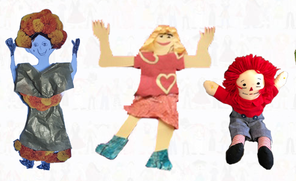 Illustrator Susan L. Roth and I will be participating in an Imagination Celebration hands-on event for the very smallest readers and pre-readers at the Orleans Branch of Enoch Pratt Free Library in Baltimore, April 14 2pm. Children will make paper dolls representing who you are now or who you want to be when you grow up. Sign up here. 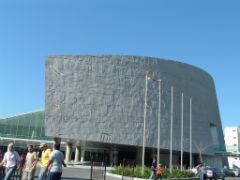 Twenty years ago, the Bibliotheca Alexandrina (BA) opened its doors in Alexandria, Egypt – honoring the memory of the great ancient library and recapturing its spirit by aspiring to be
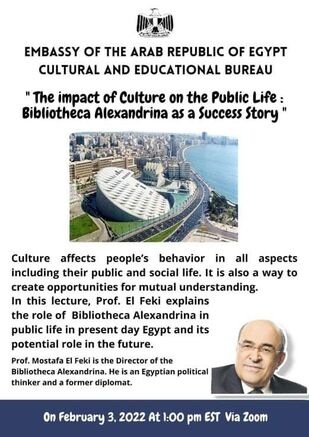 What is the role of the BA today in Egyptian public life and society – and its role in the future? Director Mostafa El Feki will address the BA as a success story Thursday, February at 1pm Eastern Time. Register here to receive the Zoom link. It was just ten years ago that the events of Hands Around the Library: Protecting Egypt’s Treasured Books transpired – there are many resources on this website to help students understand this critical time in modern Egyptian history. I will be sharing Hands Around the Library and Malala Yousafzai: Warrior with Words during World Read Aloud Day on February 2, 2022 – speaking with 3rd through 5th graders in Canton, MI (Miller and Tonda Elementary Schools); Silver Spring, MD (Glenallan Elementary) and Clifton, NJ (School 17). Don’t hesitate to get in touch if you would like a Read Aloud or other virtual presentation. 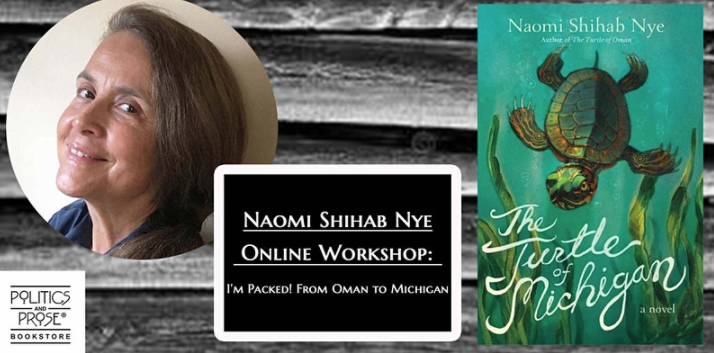 I am also pleased to invite you to an intergenerational writing workshop sponsored by Politics and Prose independent bookstore in Washington, D.C. on March 22 6:30-8pm EST. I will be talking with Young People’s Poet Laureate Naomi Shihab Nye about Turtle of Michigan, the sequel to her highly acclaimed Turtle of Oman, as Aref moves to Michigan and works to remain close to his beloved grandfather back in Oman. Young people and their parents and grandparents follow Naomi’s writing prompts about home: so essential to the many ways we see ourselves. Middle grade teachers and their classes can join at a deeply discounted rate, please email classes@politics-prose.com for more information. Finally congratulations to all of this year’s American Library Association Awards – and be watching for more to come in 2022 – Children’s Africana Book Awards, Middle East Outreach Council Book Award, Arab American Book Award, USBBY (United States Board on Books for Young People) –Linda Sue Park and Kadir Nelson are USBBY nominees for the prestigious IBBY 2022 Hans Christian Andersen Award, joining 62 candidates from 33 countries. The winner will be announced on March 21 at the Bologna Children’s Book Fair. 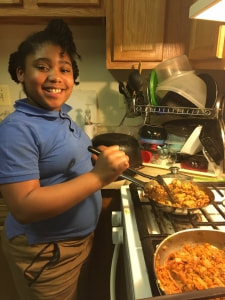 Paul Lachelier, the founding director of Learning Life, writes that "diplomacy is a social art or ethic especially needed in our divided world." Believing that diplomacy can be practiced by families as well as professionals, Learning Life has launched the Family Diplomacy Initiative - a way to make the most of social media and our increasing hours online. Learning Life, a USA-based educational nonprofit, is now welcoming families worldwide to participate in an international food culture project via Facebook. This project is the next phase in the development of Learning Life's Family Diplomacy Initiative. Founded in 2012, Learning Life aims to spread learning and citizen engagement beyond school walls in innovative ways. Launched in 2016, FDI is now Learning Life flagship program, and works to connect families worldwide with an eye to developing a family form of citizen diplomacy for a more caring world. Families are widely valued across cultures, and deeply impacted by world events, from climate change to immigration to virus transmission, yet have little voice, as families, in international affairs. (Click here for five reasons why families should be involved in diplomacy.) We believe greater focus in international affairs on the needs, challenges, joys and hopes of families worldwide can help build a more peaceful, caring world. FDI began in summer 2016 with test live internet dialogues between lower-income families in Washington DC, Dakar, Senegal, and Porto de la Libertad, El Salvador. From 2017 to 2019, we completed a community photo project then a food culture and nutrition project engaging small numbers of lower-income families in the USA, El Salvador, Senegal and Jordan. In so doing, we leveraged volunteers and the internet to engage families that don't have the luxury to travel abroad. Since summer 2019, we have more than tripled the number of families worldwide connected to FDI on Facebook as we scale up for our next phase. In this new phase, hundreds of families worldwide have the opportunity to share and learn from each other about their respective food cultures through six questions we will pose from April to October. The questions, and the months they will be posed, are:
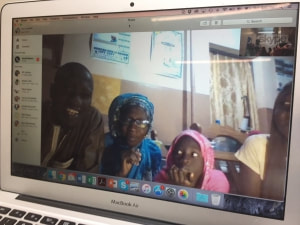 We ask families in the Facebook group to answer the questions with one or more photos plus a brief explanation of the photo(s) in English or their own language. A panel of families living in different countries across the world has been selected to answer all six questions to ensure we get a variety of answers reflecting some of the world's diversity of food cultures. In future years, we plan to pose new questions on new themes that invite families to share and learn more about family life, country cultures, world trends, and international issues. In addition, Learning Life is posting other content of interest to families to the FDI Facebook Group:
Families must understand and be comfortable with the fact that what they share will be public, on Facebook, and will be publicized via Learning Life's website and social media pages (primarily Facebook, Twitter, Linkedin). To join FDI on Facebook click here. If you would like to participate in the food culture project, please let me know by connecting with me on Facebook, and messaging me to let me know you are interested, as well as the city and country your family where your family currently lives. Questions? Contact me at paul@learninglife.info. Thank you for your interest! Paul Lachelier, Ph.D. Founder & Director, Learning Life 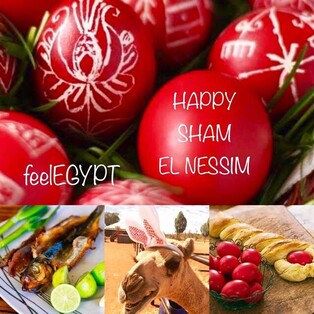 Buds and blossoms, colored eggs and spring breezes are thankfully not susceptible to COVID-19 and the new season is bursting around much of the world. Today – Monday, April 20, 2020 – is the Spring Festival in Egypt: Sham El Nessim. عيد شم نسيم سعيد عليكم (Happy sham el nessim to you) Spring has been celebrated in Egypt since ancient times, when Egyptians offered salted fish, lettuce and onions to their deities – and these are still the symbolic foods of the season. Dr. Mohamed Ibrahim Bakr, former chairman of the Egyptian Antiquities Authority, explains that: "The spring festival coincided with the vernal equinox, and the ancients imagined that that day represented the beginning of creation. The date of Sham El Nessim was not fixed. Rather, it was announced every year on the night before the feast at the foot of the Great Pyramid. The feast of 'Shamo,' means 'renewal of life' which was later corrupted during the Coptic age to 'shamm' (smelling or breathing) and the word 'nessim' (breeze) was added. The ancient Egyptians first celebrated the feast of Shamo in 2700 BC…” 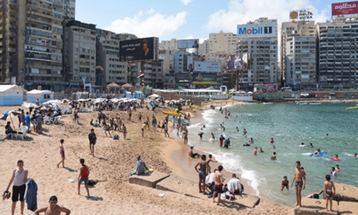 EgyptToday by Jacqueline Mounir EgyptToday by Jacqueline Mounir .In modern times, Sham El Nessim is celebrated on the Monday after Coptic/Orthodox Easter but it is not a religious celebration. Families gather for picnics, short vacations, trips to the beach – Alexandria, Egypt, would look like this. Until this year, when the government closed all beaches, gardens and tourist villages because of coronavirus spread. Once again the tourism industry in Egypt has been hard hit – although now, as with so many other aspects of our lives – we can keep on touring, celebrating and learning online – and of course, sharing cultures and traditions. The Bibliotheca Alexandrina is active on social media, including its YouTube Channel. The Egyptian Ministry of Tourism and Antiquities is launching virtual tours of tombs and other wonders of ancient Egypt. Today I want to share links and resources to the best children’s books from a wide variety of faiths, ethnic groups and nationalities. What a perfect opportunity to encourage children (and their parents) to explore literature from their own background or someone else’s: books as mirrors and windows. Let’s first open the window on Ramadan, the major Muslim month of fasting that begins approximately April 24 this year (with the first sighting of the crescent moon). Muslims fast from dawn to sunset, typically beginning when they are in early teens, although younger children may begin fasting for a few days or hours. The month celebrates the moment when the Prophet Mohammed first began receiving the Quran, Islam’s holy book. The month includes acts of charity and the joyous end of the fast each day, called iftar, features special foods. Ramadan ends with a three-day feast/festival called Eid el Fitr. 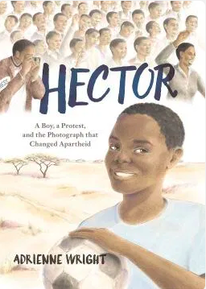 April is also Arab American Heritage Month. Salaam Reads is an imprint of Simon & Schuster focused on books about Islam and young Muslims. KitaabWorld is an online platform focused on Muslim children’s literature from South Asia. The Horn Book Magazine recently featured a conversation about “We Need Diverse Jewish and Muslim Books,” including a list of recommended interfaith books. The Arab American Book Award is presented by the Arab American National Museum in Dearborn, Michigan. The children’s literature award in 2019 went to Egyptian American Today show host Hoda Kotb for I’ve Loved You Since Forever. Two young Muslim sisters in Michigan created "Girls of the Crescent" to identify books with Muslim main characters and donate them to schools and libraries. Lee and Low, the largest multicultural publisher in the U.S., has a Cultures section on its website. Multicultural Children's Book Day (January 29, 2021) offers a variety of online resources and teaching kits. The 28th annual Children’s Africana Book Awards were recently announced. The top winner is from South African author Adrienne Writer – Hector: A Boy, A Protest and the Photograph that Changed Apartheid. “While the details of Hector’s life help readers realize that he was just a regular boy who didn’t deserve to die under this unjust system of segregation, this portrayal of the protesting teens also emphasizes how much power children can have when they stand up for their rights,” from the Kirkus starred review. The best children’s books for many ethnic groups are identified each year with awards. Here are the current winners, check the lists for honor books and past winners - 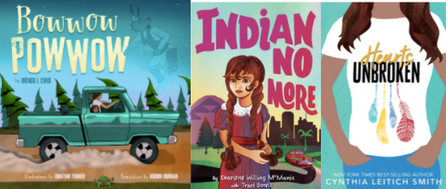 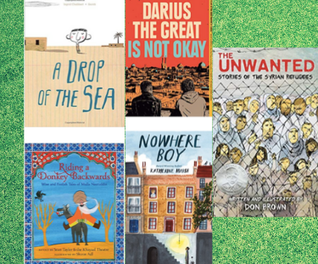 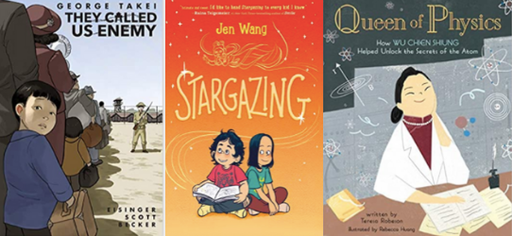 Asian Pacific American Award for Literature (APALA) 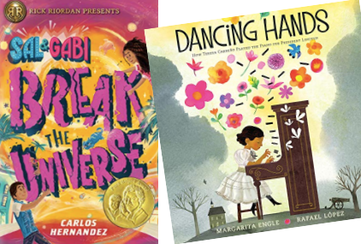 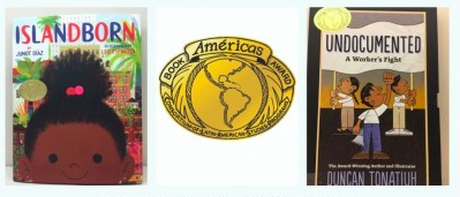 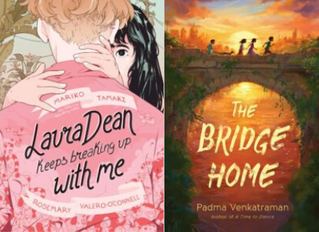 Hans Christian Anderson Award - 2020 winners to be announced May 4 – Jacqueline Woodson is on the short list for 2020. This is the highest international recognition give to an author or an illustrator whose books have made a lasting contribution to children’s literature United States Board on Books for Young People (USBBY) 2020 Outstanding International Books List (winning books come from Portugal, Switzerland, Chile, Korea and many more – presentation about the winners here) Many of the celebrations for this year’s award winners have been cancelled or postponed because of COVID-19 but the books are all waiting to be savored, opening doors to new adventures and dreams, knowledge and hope. It’s time for new adventures! Please share additional resources, awards
or comments on specific winning titles. 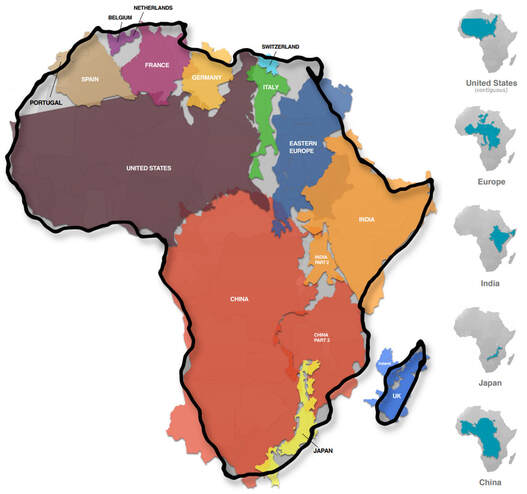 “The African continent has a land area of 11.7 million square miles – enough to fit in the United States, China, India, Japan, Mexico and many European nations combined,” writes Jeff Desjardins in Visual Capitalist – and he provides this visual from the artist Kai Krause to show what he means. In the United States we have a tendency to talk about Africa as a single, monolithic expanse – not an enormous and diverse collection of cultures, ethnicities and geography. Since 1991, the Children’s Africana Book Awards have been working to correct misimpressions about Africa by honoring children’s and young adult books that contribute to a better understanding of African societies and issues. The 27th Annual Awards will be honored with a dinner on March 27 on the Howard University campus in Washington, D.C. (tickets available here) and a family festival (free and open to the public) the following day at the Smithsonian’s National Museum of African Art. You can meet many of this year’s authors and illustrators at both events – and read these books all year long! THE MARCH 27 DINNER AND MARCH 28 FESTIVAL HAVE BEEN CANCELLED DUE TO CORONAVIRUS CONCERNS - STILL A GREAT TIME TO KEEP READING! 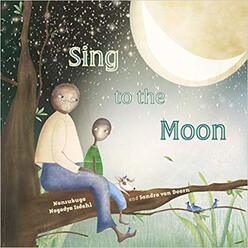 BEST BOOK FOR YOUNG CHILDREN Sing to the Moon by Nansubuga Nagadya Isdahl, illustrated by Sandra Van Doorn Lantana Publishing, 2019 “For one little Ugandan boy, no wish is too big. First he dreams of reaching the stars and then of riding a supernova straight to Mars. But on a rainy day at his grandfather's house, he is brought down to earth with a bump. Do adventures only happen in galaxies far away or can he find magic a little closer to home? A touching story of a grandfather's love for his grandson and the quiet pleasures of a rainy day.” Goodreads 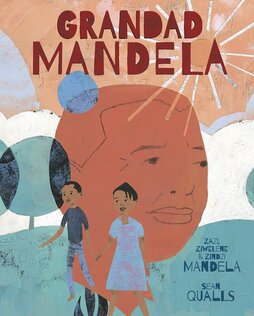 HONOR BOOKS FOR YOUNG CHILDREN Grandad Mandela by Ambassador Zindzi Mandela, Zazi and Ziwelene Mandela,Zondwa Mandela Lincoln Children’s Books, 2018 (South Africa) Nelson Mandela’s two great-grandchildren ask their grandmother - Mandela’s youngest daughter – 15 questions about their freedom-fighting grandfather. “The narrative responds to important questions regarding growing up under segregation where the authoritative government punished anyone who defied the rigid laws of apartheid…. The story also shows how faith sustained the Mandela family – celebrating each of his birthdays without him. The sadness (as understood by grandkids) of growing up under apartheid highlights the spirit of “Ubuntu” that grandad Mandela fought all these years to see it through when he became the first black President of South Africa.” Fatima Barnes, Howard University Full Africa Access Review Mama’s Cover Cloth by Ruby Yayra Goka, illustrated by Edmund Opare Sub -Saharan Publishers, 2018 (Ghana) Do you know that the African woman’s cover cloth has many uses? In this delightful book that young children will enjoy, a little girl shares the many uses of her mother’s amazing cover cloth. Animal Village written and illustrated by Nelda LaTeef (Niger) Sub-Saharan Publishers, 2018 – African Books Collective distributor) Animal Village is a folk tale from the Zarma culture of Niger, West Africa about a tortoise who saves her village from the ravages of drought with wisdom passed down from an “old story.” Nelda LaTeef’s colorful and strikingly brilliant montage of illustrations, in acrylic and collage, captures the richness and vibrancy of the sub-Saharan culture from which the story springs. The story is especially relevant to sub-Saharan Africa as it focuses on the devastation of drought and the importance of received knowledge. With its dual themes of wisdom and grit, the book happily entertains while it teaches the importance of hard work and persistence as keys to success. 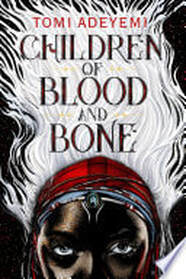 BEST BOOK FOR OLDER READERS Children of Blood and Bone by Tomi Adeyemi Henry Holt Books for Young Readers, 2018 (Nigeria) “(Tomi) Adeyemi’s ashe or power as a writer is expressed in the success of her debut novel Children of Blood and Bone (a debut novel for Adeyemi and a New York Times bestseller)… Adeyemi’s work has flow, excitement, and notable motives. She skillfully weaves in aspects of African historical and modern politics, culture, and spirituality. The main character Zelie, and her diviner class have been persecuted, most violently by the tyrant King Saran…. The deities and domains of the Orisha clans are refreshingly similar to reality… “The levels of violence contained within this book are difficult to swallow, even for some seasoned adults…. Millions of people are ordinarily numb to the fact that hyper-violence and wretched Africanized worlds are hallmarks of modern media (esp. Hollywood), and accept it wholesale. Remarkably though, Adeyemi inserts a critical lifeline into this abyss–the concept that the Gods of one’s own ancestors (in this case the Orisha) provide salvation unlike any other.” Jaye Winmailawe, Ph.D., scholar, author and priest of the Orisha Full Africa Access Review 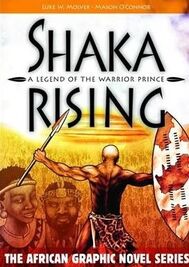 HONOR BOOKS FOR OLDER READERS Shakia Rising and King Shaka by Luke Molver Story Press Africa, 2018 (South Africa) “The graphic novels – Shaka Rising and the sequel, King Shaka – are imaginative, engaging, and innovative ways of narrating the legend of Shaka, the most renowned 19th century monarch in Southern Africa. Comic book writer-illustrator Luke Molver, a South African born in Durban, does an excellent job of telling and showing the rise of King Shaka and the Zulu nation in the wider context of individuals and groups in the region at the time…. “…what we knew of Zulu history from books during my formative years in apartheid South Africa was very biased and skewed. The content of what blacks needed to know then was supported by segregated laws and controlled by the ruling party. Molver’s novels written over twenty years after the end of apartheid are a testament to the great insight and sensitivity he brings to his work. As Mbongeni Malaba, professor of English at the University of KwaZulu-Natal wrote in the Foreword to Shaka Rising, “The Graphic Novel Series aims to make great African stories accessible to a world-wide audience of young readers, drawing on multiple sources to ensure balanced and credible accounts.” Fatima Barnes, Howard University Full Africa Access Review 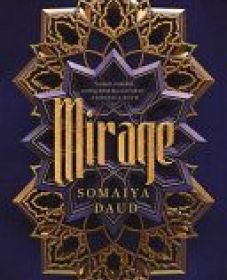 Mirage by Somaiya Daud Flatiron Books, 2018 (Morocco) “Mirage is a fictional novel that not only draws the reader into its story and prose, but challenges the reader to observe futurism and science fiction in a unique cultural context where it is not commonly used. Readers familiar with Moroccan culture find themselves constantly encountering values and traditions that are clearly Moroccan, while at the same time navigating the author’s magically engaging futuristic kingdom… The protagonist, Amani, grows throughout the book from a victim into a heroine and it is her culture and tradition that give her the strength to transform herself and to overcome the challenges laid in her path. For a generation of young readers who are faced with ever-accelerating globalization and pressures to disregard tradition, this novel tells a story of how holding on to your identity, traditions, and even language can be a source of strength in overcoming adversity.” Suzanne Moyer Baazet, African Studies Association Full Africa Access Review 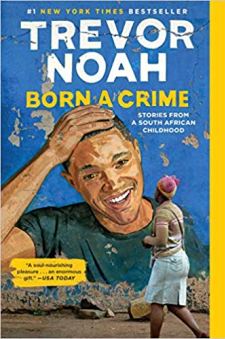 BEST NEW ADULT BOOK Born a Crime: Stories from a South African Childhood by Trevor Noah Penguin Random House, 2016 (South Africa) The compelling, inspiring, and comically sublime story of one man’s coming-of-age, set during the twilight of apartheid and the tumultuous days of freedom that followed. Read more here – 27 years of winning books plus videos, future award nominations process, Africa Access database, teaching resources - and make plans to celebrate the Children's Africana Book Awards, in Washington, D.C., in your classroom and with all children everywhere. |
Karen Leggett AbourayaArchives
April 2024
Categories |
BOOKS |
RESOURCESLibraries Around The World
For Young Writers For Educators and Librarians Contact karen@handsaroundthelibrary.com |
© COPYRIGHT 2020. ALL RIGHTS RESERVED.
|
